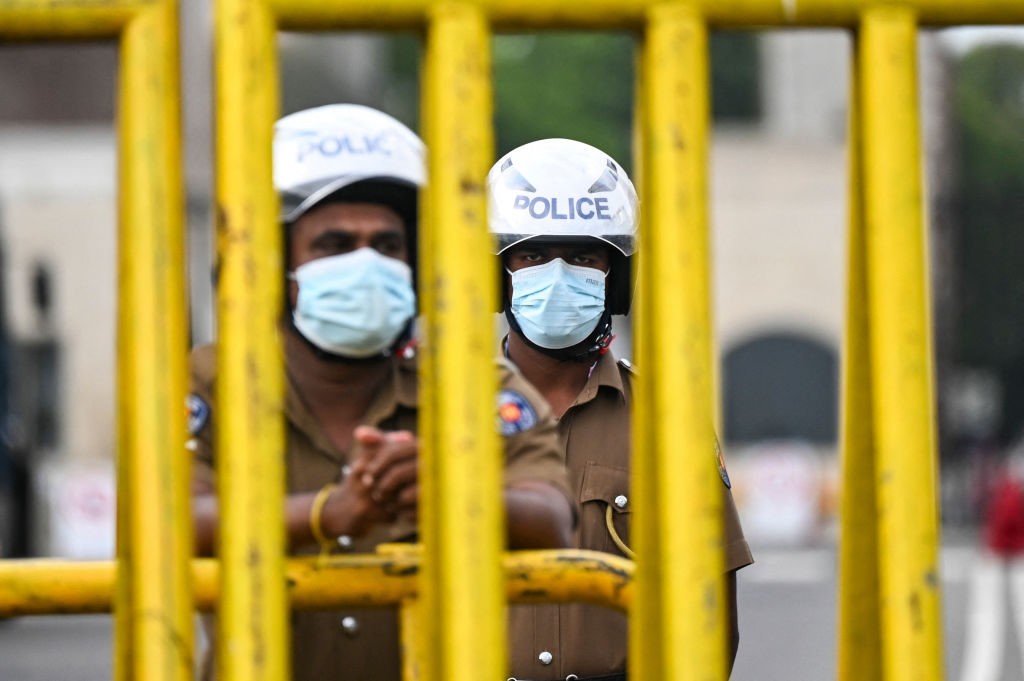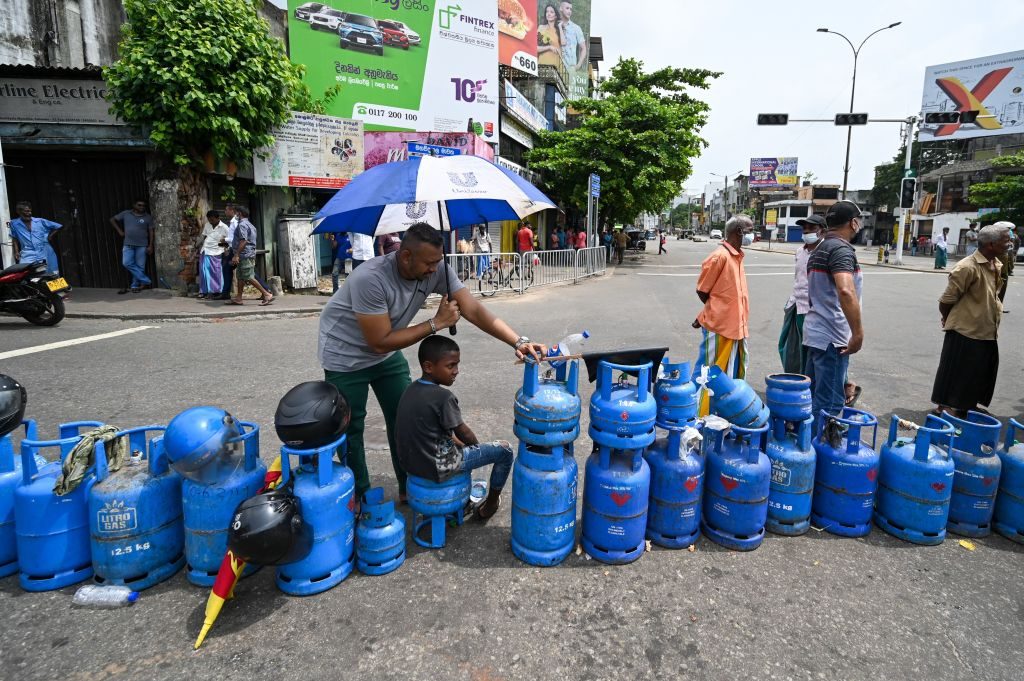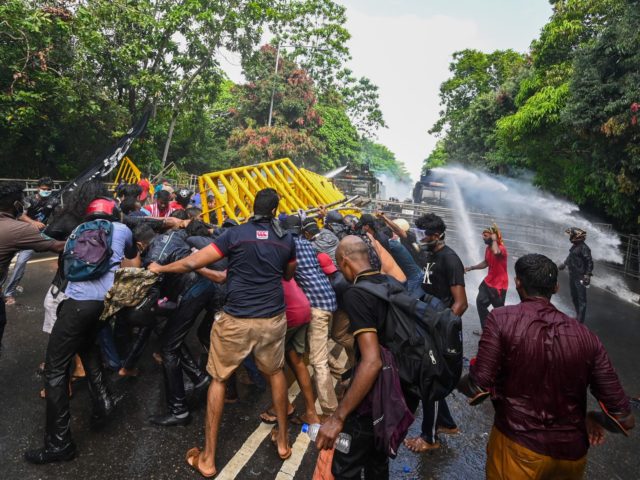Sri Lankan President Gotabaya Rajapaksa declared a state of emergency order on Friday night — his second such act since April 1 — after violent protests demanding Gotabaya’s ouster gained renewed momentum in Colombo earlier that same day, Sri Lanka’s Daily Mirror newspaper reported.
The office of Sri Lanka’s presidency issued the decree on May 6 saying it was part of the federal government’s effort to “ensure public order” amid resurgent anti-Gotabaya protests in the national capital of Colombo (Gotabaya Rajapaksa is part of a large, extremely powerful political family; his brother Mahinda remains prime minister and dozens of Rajapaksas have held government positions in the past decade). The state of emergency went into effect on May 7 just after midnight local time, though the Sri Lankan government did not specify if the edict applied only in Colombo or nationwide, nor how long the measure would remain in place.
Violent clashes between anti-government protesters and Sri Lankan police officers on roads leading to the nation’s parliament building in Colombo on May 5 and May 6 likely served as a major instigator of the state of emergency order, which was announced hours later.
“Police used tear gas to disperse a group of protesters who were at the entrance of the Parliament on the Pelawatta road,” the Daily Mirror reported on Friday.
“Police also used tear gas and water cannons to disperse the protesters on the parliamentary entrance at Polduwa Junction this evening as well,” the newspaper observed.
Agence France-Presse (AFP) revealed on May 6 that thousands of anti-Gotabaya protesters had camped out on roads leading to Sri Lanka’s parliament building since May 5.
“Officers fired a barrage of tear gas followed by water cannon from two trucks, but the crowd quickly reassembled behind police barricades set up to block access to the parliament,” the news agency reported of the action between demonstrators and police officers on May 6.
“It was the second time police tried to disperse the crowd with tear gas, after an earlier unsuccessful attempt on Thursday afternoon [May 5],” AFP noted.
In addition to the sometimes violent rallies outside Sri Lanka’s parliamentary building, the country endured a nationwide workers’ strike on May 6. Millions of citizens participated in the 24-hour strike, which nearly ground Sri Lanka’s desperate economy to a total halt. Sri Lankan trade unions organized the workers’ strike on Friday as a part of a demonstration that demanded the resignation of Sri Lankan President Gotabaya Rajapaksa.

Policemen stand guard outside the Sri Lanka’s President Gotabaya Rajapaksa office in Colombo on May 7, 2022. Sri Lanka’s president on May 6 declared a state of emergency for the second time in five weeks, giving security forces sweeping powers amid a nationwide strike by angry demonstrators who blame him for an unprecedented economic crisis. (ISHARA S. KODIKARA/AFP via Getty Images)
Many Sri Lankans have blamed the current Rajapaksa administration [Mahinda previously served as president, as well] for its alleged mishandling of the nation’s economy, which has suffered from its worst downturn in 70 years since early March.
Gotabaya Rajapaksa last declared a state of emergency order on April 1 in response to violent anti-government protests that culminated in an attempted storming of his personal residence in Colombo on March 31. A mob of hundreds of people, some wielding clubs and stones, tried to enter and damage the president’s home that night. Almost all of Sri Lanka’s Cabinet — save for President Gotabaya and his brother, Sri Lankan Prime Minister Mahinda Rajapaksa — resigned on April 3. The resignations included two other Rajapaksas.
The Daily Mirror alleged on May 6 that “President Gotabaya Rajapaksa, in a special meeting with the Prime Minister and cabinet of ministers today evening, requested Mahinda Rajapaksa to step down from the premiership as a solution to solve the ongoing political crisis in the country.”
The newspaper cited no sources for this claim, saying merely that it had “learned” of the supposed development.

Consumers in long lines to buy cooking gas use their empty cylinders to block a main intersectional road in Colombo on May 8, 2022, after a local store ran out of supplies. Protests have spread across the country against worsening paucity of gas, fuel, food and medicines. (ISHARA S. KODIKARA/AFP via Getty Images)
“[T]here is yet to be an official response on whether Mahinda Rajapaksa will tender his resignation,” the publication acknowledged.
An ongoing shortage of foreign currency reserves that Sri Lankan traders traditionally relied on to purchase essential imported goods greatly contributed to the island nation’s latest economic turmoil, according to some analysts. The fund deficit — caused in part by a lack of tourism revenue and remittances during the Chinese coronavirus pandemic — left Sri Lanka unable to purchase basic products such as food, fuel, and medicine that it almost exclusively buys from foreign markets starting in early March. These deficiencies translated to mass shortages of vital goods across Sri Lanka that inspired the nation’s initial and ongoing anti-government protests.

COMMENTS
Please let us know if you're having issues with commenting.